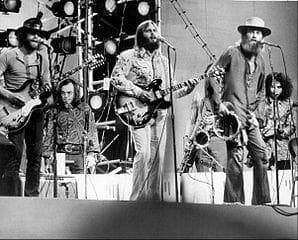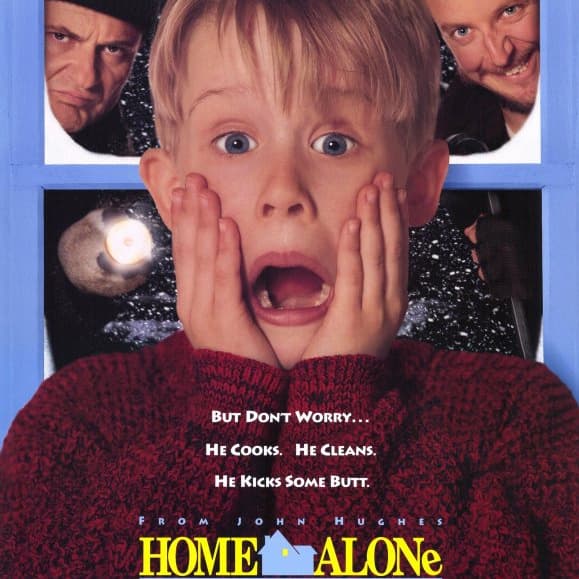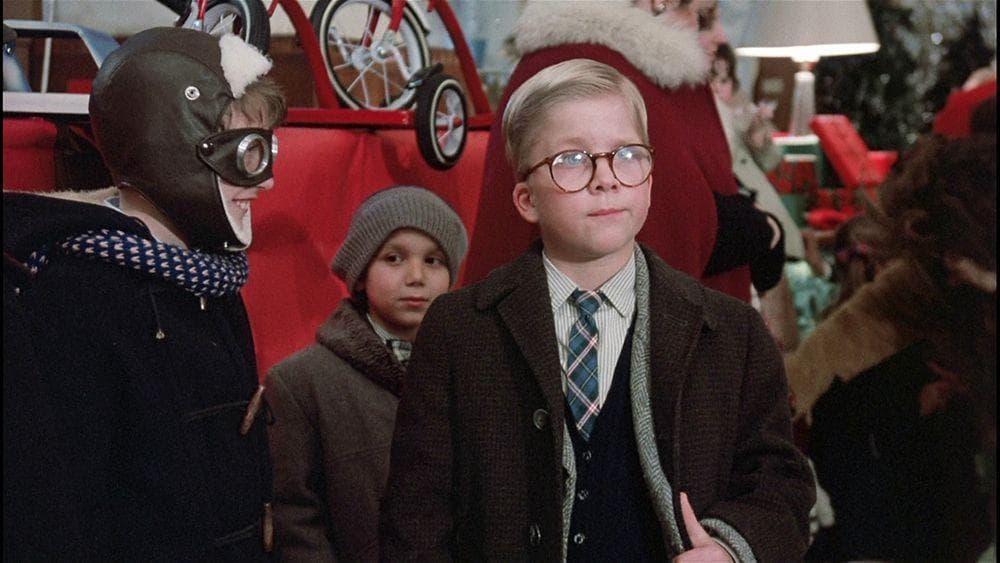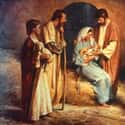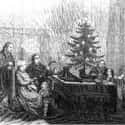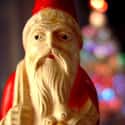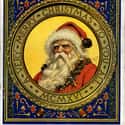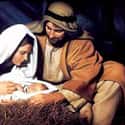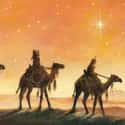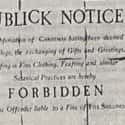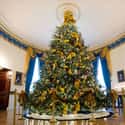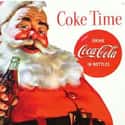-
(#1) Jesus Was Born on December 25th
THE MYTH:
Of course, there are a number of errors in this reasoning, the least of which is that the human gestation cycle is actually 40 weeks, which would put Jesus’s birth sometime in mid-January. Not only that, but Luke makes a specific reference to shepherds grazing their sheep in the fields, which only took place in the warmer months of the year. December 25th wasn’t celebrated as Christmas until at least the 4th Century CE, when it became a vehicle to deter Christians from celebrating the Pagan winter solstice.
Jesus was born on December 25.
THE REALITY:
There is no scriptural justification for this particular date being Jesus’s birthday. The date actually comes from scholar Hippolytus of Rome, who determined it early in the third century, assuming that the conception of Jesus took place at the Spring equinox, which he placed on March 25. He then added nine months, taking advantage of winter festivals that were already celebrated around that time.
-
(#2) Christmas Trees Have Always Been Part of Christmas
THE MYTH:
THE REALITY:
Christmas trees have meaning relative to Jesus.
Evergreen trees were already popular in Pagan rites before Jesus’s birth, but they didn’t become a widely-held symbol of Christmas until the Renaissance. German Protestants began bringing home and decorating the large trees that grew in their local forests, and the custom spread throughout the various German dukedoms, then jumping to England with the ascension of a German king to the British monarchy. German-settled cities in America began using the custom, and it spread from there.
-
(#3) Christmas Is the Most Important Holiday in Christianity
THE MYTH:
THE REALITY:
Christmas is the central event of the Christian calendar.
Easter has far more significance on the Christian calendar than Christmas does. Historically, Jesus’s birth wasn’t celebrated until centuries after it occurred, while his death and resurrection were celebrated by the earliest converts to Christianity. Also, Easter is celebrated over a far longer period of time than Christmas on the traditional Christian calendar – lasting almost two months from February to April.
-
(#4) The War on Christmas
THE MYTH:
The War on Christmas is real, and slowing taking any hint of religiosity out of the holiday.THE REALITY:
Controversies about the “proper” way to celebrate Christmas go all the way back to the supposed time of Christ’s birth. However, the modern “War on Christmas” originates not with a right wing media pundit, but the ultra-conservative, anti-UN, and racist John Birch Society. The JBS distributed a pamphlet in 1959 titled “There Goes Christmas,” which posited a communist plot to deprive right-thinking Americans of their right to celebrate the holiday. The pop culture version of the War on Christmas is a mix of conservative propaganda and pushback against inclusivity.
Fox News propaganda aside, there is no War on Christmas. Christmas sales start earlier every year, holiday decorations seem to go up before Halloween pumpkins have rotted, and the only difference between Christmas now and Christmas in “the good old days” is that there’s more acknowledgement of the fact that some people celebrate the holiday season, but not Christmas itself. There’s no evidence that retailers are avoiding the word “Christmas,” and despite more cities using neutral terms like “happy holidays,” Christmas tree lighting ceremonies, public caroling, and appearances by Santa Claus are still integral parts of municipal holiday celebrations.
-
(#5) Writing 'Christmas' as 'Xmas' Is Horribly Insulting to Christians
THE MYTH:
Shortening “Christmas” to “Xmas” is a horrible insult to religious people.
THE REALITY:
It’s not, at all. The first letter of “Christ” in Greek translates to “X,” as it also does in the Roman alphabet. While the abbreviation isn’t used in most Christmas-based advertising or scripture, the word “Xmas” dates all the way back to the 12th Century, when it was used in the Anglo-Saxon Chronicle. The idea of keeping Christ in the word Christmas is both nonsensical and a-historical.
-
(#6) Santa's Origin Story
THE MYTH:
Santa Claus has always been the same as St. Nick and Kris Kringle.THE REALITY:
While all three names (as well as Father Christmas and others) are now widely held to reference the same jolly fat man in a red suit, this wasn’t always the case.St. Nicholas was a fourth-century Turkish bishop who spent his life giving money to the poor, often by secretly leaving money in people's stockings overnight. He died on Dec. 6, and was later proclaimed a saint – making December 6th St. Nicholas Day.
Around the 15th Century in England, the burgeoning Protestant population transformed St. Nicholas into the drunken gift-giver Father Christmas, who, in turn, was renamed Kris Kringle in the U.S. (Kringle being a popular Danish pastry often eaten around the Christmas holiday.)
American cartoonist Thomas Nast popularized the modern iteration of Santa Claus as a jolly bearded man living at the North Pole, and L. Frank Baum’s 1902 book The Life and Adventures of Santa Claus forever etched it into the collective consciousness. But this version of Santa is only about a century old.
-
(#7) Jesus Christ Was Born in Year Zero
THE MYTH:
It’s also possible to work backwards using a reference in the Gospel of Luke, to put Jesus’s birth around 30 years before his death, which is generally regarded as having taken place in 33 CE. So, that leaves a window of about 7-8 years in which Jesus could have been born – but probably not in 1 BCE or a mythical “year zero.”
Jesus was born in Year Zero.
THE REALITY:
The chronology of Jesus’s birth has always been up for debate by both religious and historical scholars. While the modern calendar places his birth at 2014 years ago (as of 2014), both the Gospels of Luke and Matthew place his birth around the time King Herod the Great died. As most scholars agree, this took place in 4 BCE, which would put Jesus’s birth around that time, possibly as late as 6 BCE.
-
(#8) We Three Kings?
THE MYTH:
Jesus was visited by three kings in the manger.THE REALITY:
In the Bible the “three magi” were wise men, not kings. Their names, origins, and ethnicities are never mentioned, and what’s often glossed over is that the Gospels say they visited Jesus as a young child at home with his mother - not as an infant in the manger. Their names weren’t introduced into the Christmas mythos until a 6th century mosaic in Italy called them by their three popular names.
Tradition holds that three Eastern Kings, Gaspar, Melchior, and Balthasar, followed a shooting star to the manger where the infant Jesus was resting. However, this is false from both a historical and scriptural point of view.
-
(#9) Exploding Christmas Trees
THE MYTH:
Christmas trees randomly catch fire, putting children in peril.THE REALITY:
Not only that, but none of the days with the most Christmas tree fires were actually before Christmas, meaning simply getting rid of dried out trees quickly after the holiday is the best way to prevent a tree fire. What’s arguably more of a danger is falling while putting up decorations, as emergency rooms treat around 5,800 falls every year due to people toppling over while decorating their trees.
Every holiday season brings with it warnings of Christmas trees bursting into flames at will, due to either a lack of water or lights blowing up. You can find tips on how to prevent these fires everywhere, but what’s a little harder to find is the research that shows these fires to be extremely rare. According to the National Fire Protection Association, between 2006 and 2011 there were only about 230 fires caused by Christmas trees each year. Factor that number into the millions of households that put up trees and you can see just how rare these fires are.
-
(#10) Christmas Was Once Banned in America
THE MYTH:
Christmas was actually banned in America for a time.THE REALITY:
The Puritan government responded to British authorities attempting to ride herd on them by banning the holiday, and the ban was in place for 22 years. It wasn’t until well into the 1800s that Christmas was a holiday celebrated in large numbers in Boston.
This is true. The celebration of Christmas was, at one time, banned in part of the United States of America. But it wasn’t San Francisco liberals or a knuckling-under city council behind the ban, but the state of Massachusetts – in 1659. The Puritans who settled in New England wanted nothing to do with Church of England holiday celebrations, and this included a holiday that had less to do with Christ and more to do with drunkenness and frivolity.
-
(#11) The White House No Longer Has a Christmas Tree
THE MYTH:
The only hint of truth in this glorified e-mail chain rumor is that the Capitol Christmas Tree decorating program, which is not the same thing as the White House Christmas Tree, allows for handmade ornaments sent by people around the country. However, these ornaments can’t be religious or political in nature – reflecting the beauty of the state they represent, not a political agenda.
The White House no longer has a Christmas Tree, but instead puts up a Holiday Tree each year.
THE REALITY:
This is a silly, anti-Obama rumor that has surfaced every year since 2009. But it’s never been true, as you can see by the pictures that come out of the White House every year showing the Obama family putting up, decorating and posing with what’s clearly labeled a Christmas tree.
-
(#12) Santa Claus Started as a Coca-Cola Marketing Gimmick
THE MYTH:
Coca Cola invented the modern image of Santa Claus.THE REALITY:
As previously mentioned, the pop culture version of the modern Santa emerged as an amalgam of various traditions, and this amalgam included the red-and-white garb that has come to define the jolly figure. Coca-Cola jumped on this image as it became more and more popular. In the 1930s, with the Depression slowing their sales, the company unveiled an ad campaign featuring Santa Claus guzzling down not a glass of milk, but an ice cold Coke between present deliveries. His red-and-white attire fit well into Coke's corporate branding.However, this image was already in the popular consciousness, as seen in books and cartoons of the times. In this era before national television ads, many more people saw the Coca-Cola Santa than these others, but he didn’t come first – and he certainly wasn’t invented by the soft drink company.
New Random Displays Display All By Ranking
About This Tool
Christmas is a religious holiday with a long history. Every December 25th is an important holiday for people to celebrate and commemorate the birth of Jesus. Christmas is the most solemn holiday in western countries and Christianity, and there are many legends and myths about this holiday that you may also have heard of. It is said that on the night of Christmas Eve, Santa Claus will drive a reindeer sleigh full of gifts to send to children who have performed well this year.
The custom of dressing up Santa Claus and Christmas trees to celebrate Christmas has gradually become popular all over the world. The random tool will help us to know 12 interesting Christmas legends and myths.
Our data comes from Ranker, If you want to participate in the ranking of items displayed on this page, please click here.

